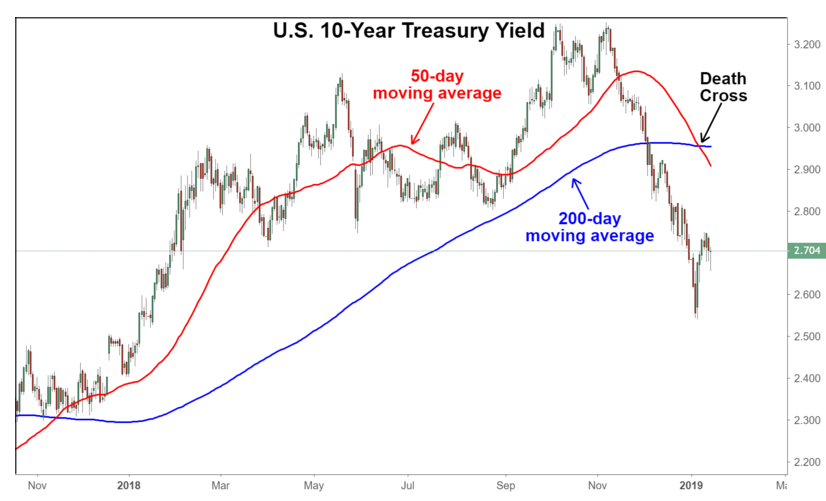Today, Citigroup reported earnings in line with analysts expectations, but warned of weakness in its fixed income business. This resonates with our own concerns for the US debt market. Both government bonds and corporate bond yields have been under pressure for months as we have seen an inversion of the yield curve in some U.S. Treasuries (2 vs 5 year notes). The 10-year U.S. Treasury Yield,probably the most followed bond in the world, entered a ‘death cross’ last week as I explain below.
What does that mean?
The corporate bond market now stands at over $9 trillion, according to the US Securities Industry and Financial Markets Association. That’s up nearly 65% from 10 years ago when the Federal Reserve lowered interest rates to nearly zero. Corporate debt now makes up 25% of the total US debt market.
The credit quality of the companies issuing the bonds has deteriortaed. As I discussed last week, one trillion dollars (approximately 11% of the total market) is issued as leveraged loans, even as real interest rates have been rising. In its earnings report, Citibank highlighted that there is a growing concern that many companies that issued bonds to raise capital may not be able to pay back those loans.
Meanwhile the US Treasury Department is having its own issues selling debt. The US Treasury was a net buyer of debt coming out of the financial crisis up until last year. That stabilized the market. Now that it is back to its regular role of selling U.S. debt, the demand is weak.
A Death Cross
The yield on the 10-year treasury note demonstrated a ‘death cross’ last week, when the 50-day moving average crosses below the 200-day moving averages. The pattern was confirmed today. The death cross is usually considered an exceptionally bearish pattern, and has occurred relatively rarely on the 10-year yield in recent history. The last time it occurred was in June 2017.
Since November, interest rate expectations have been falling sharply as economic concerns have increased and the Federal Reserve has become increasingly dovish about further rate hikes in 2019. The 10-year yield hit a double-top around 3.250% in October and November, when expectations of aggressive rate hikes by the Fed were still high. Those expectations have deteriorated significantly as worries over slowing economic growth and even a possible recession still loom. In the near-term, yields may continue to decline as investors remain nervous, market volatility stays elevated, and the Fed becomes increasingly cautious. However, we expect a near term bounce after the recent sell off. After that, it may become even more difficult for the US to sell its debt.

